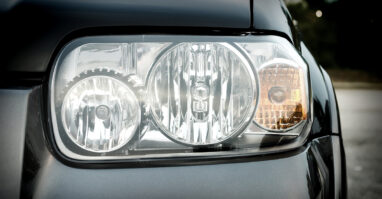Refresher on Fixed Operations Success
Over the last couple of years, dealerships have generally experienced record sales and volume growth. Today, there are more vehicle units on the roads than anytime in recent history. Unfortunately, with higher-than-ever inflation, coupled with increased interest rates, economists and other experts are predicting a marked decrease in demand for both new- and used-vehicle sales in the upcoming year. The average length of vehicle ownership is now more than eight years. Dealers need to concentrate on what should already be their main profit centers: parts and service operations. Here are some “back to basic” suggestions for monitoring and increasing the profitability in fixed operations.
Focus on Customer Experience
Consider increasing the use of the service scheduling system and monitor peak times. No one likes to show up for a designated appointment and then wait over an hour to be attended to. A smooth process allows the service writers to spend more time with their customers, doing thorough walkarounds on the vehicles while still in the service drive. For the convenience of the customers, ensure transportation options such as rental/ loaner vehicles or even a shuttle van are available if applicable. Or consider a vehicle pick-up at home or their place of business if these are viable options.
Before any work commences in the repair order stage, have the technician(s) video and send their findings/diagnostics and suggestions to the customer for approval before any additional, needed work is performed. For those repair orders (ROs) with appointments, pull the parts ahead of time and deliver them to the service bays, especially “kit” items.
All the above will “train” customers over time to make appointments for better service. As an aside, also implement pay plans that allow for technicians to upsell only quality line items to the RO. This extra care should lead to more line items per RO, a more satisfied customer, and hopefully better sales satisfaction indexes.
Traffic Counts and Advertising
As noted above, there should be more units in operation (UIO) than ever before. Ensure maximum usage of the customer relationship management (CRM) tools and software. All customer attributes and variables come from the CRM. Many distinct reports and queries can be generated using these powerful databases.
Concentrate on “lost souls”–customers who have not been in for service for over a period of specified time, or have gone to competitors–and tailor advertising and discount campaigns around them. Or reward current customers with special promotions and other loyalty programs. And constantly monitor actual customers to UIOs in the market area, which is an important ratio.
Review advertising expenditures and constantly check what is working, i.e., where are service lane customers coming from, whether it be email or text campaigns, internally from the Business Development Center (BDC) or service writer efforts, or on website specials. Adjust accordingly and consistently update.
Track Gross Profitability
Frequently monitor work in process and open repair order (and parts ticket) reports to ensure ROs are being timely completed, and customer time promises have been met. Run management and other exception reports to determine who is adjusting ROs for discounts, and make them accountable for every discount, changes in labor rates or hours, or other changes that need authorizations. Inquire and take corrective action, if needed, on actions outside of regular processes and procedures. Consider providing additional training and mentoring to the service team and advisors to improve service sales processes.
Analyze stall utilization on all service bays, and track labor technician efficiency. This will assist in appropriate technician staffing. Also, ensure that the warranty reimbursements in both parts and labor have been updated to customer pay retail rates. This adds significant gross dollars to the bottom line.
In the parts department, consider taking deposits on all special-order parts, and follow-up with customers to get them back into the dealership for service work. Sell any nonreturnable obsolete parts that cannot be retailed or wholesaled to brokers or online and cut losses. On wholesale parts sales, ensure that parts aren’t being sold to competitors like independent shops, where the service work can be done in-house.
An AutoCPAGroup member could be a helpful resource to discuss any of the above or assist in implementing processes and procedures.
By Scott Lewis, CPA, Rosenfield & Company, PLLC
Where Did the Cash Go?
Where did the cash go? That is a question often asked by dealership owners. The answer often lies in analyzing various parts of the dealership to determine what the cash has been spent on.
In a perfect world, the net income of a dealership would flow directly into cash in the bank, but several factors impact whether that is the case. Many items impact cash flow in a dealership, but a few of the biggest are the collection of contracts in transit, collection of receivables, amounts of new- and used-parts inventory, as well as investments made in fixed assets and facilities.
Monitoring contracts in transit, receivables and inventory levels are ways that you can ensure that the income earned is turned into cash. Contracts in transit over five days old should be reviewed to determine whether files are being completed, and it may be necessary to implement ways to collect contracts as quickly as possible by using e-contracting or other similar methods of getting completed contracts to the lending institutions so funding can be expedited. Receivables over 60 days old should also be reviewed as the longer invoices go unpaid, the more likely it is that they will not be paid. Inventory levels should be reviewed on a regular basis to ensure that adequate turn levels are being maintained.
Tracking cash flow is all about the insight it generates. Not only does it allow you to keep the doors open because you know you have enough money to handle your obligations but it also helps meet your short- and long-term goals for expansion of business operations or facility improvements.
The dealership may use cash to make an investment into fixed assets or facility improvements or possibly, the dealership is looking to start a wholesale parts business. Many of these items will use cash in the current year but will generate additional amounts of income and cash in future years.
In the end, cash flow is always an essential part of any organization. You need visibility into where money is coming from and where it’s going in order to always make the most informed decisions possible.
So, if you’d like to get additional insight into dealership cash flow, or if you just have any additional questions that you’d like to go over with someone in a bit more detail, please contact an AutoCPAGroup member.
By Justin Burchill, CPA, Brady, Martz and Associates, P.C.
Applying Available Cash Flow – Fixed Assets
The past few years, post-pandemic, have seen sometimes unprecedented profits for many dealerships, which translates into a strong uptick in available cash. Many dealers who have been contemplating fixed asset additions or facility upgrades now feel that the climate is right for them to get it done. Fortunately, along with increased cash flow, current tax provisions smooth the path to creating opportunities to replace aging furniture and equipment, renovate and expand.
Section 179 expense election: The expensing limit for 2023 is $1,160,000, with a $2,890,000 investment limit phaseout. Section 179 allows businesses to expense the cost of fixed assets such as service department equipment, furniture, computers and qualified leasehold property. With high interest rates and inflation leading to a possible decline in demand for new cars and a longer term vehicle ownership cycle, you can expect parts and service department activity to increase. This may be an opportune time to replace aging service equipment, upgrade fixed operations technology tools, and expand by adding service bays and other new equipment that can increase productivity.
Bonus depreciation: For 2023, bonus depreciation allows for 80% of the cost of qualifying property to be deducted in the year it is placed in service. There are some differences between bonus depreciation and the Section 179 election, such as applicability to individual states, scope of the election (Section 179 is elected on individual assets while bonus is elected on an entire class of assets) and the opportunity to fully deduct bonus in event of a loss year, while the Section 179 deduction is limited in a loss year. Also, if you have a trust as a member of a pass-through entity such as an S Corporation or an LLC, you are precluded from applying the Section 179 expense election; not so for bonus depreciation.
Caution: When considering electing bonus depreciation, the Section 163(j)3 interest expense limitation needs to be considered. In return for excluding floor-plan interest from the Section 163(j) equation, one needs to forego bonus depreciation. For 2022 and beyond, the interest limitation floor has reverted from 50% to 30% of adjusted taxable income, and depreciation and amortization are no longer added back, which means that even though a year is profitable with lower inventory levels and lower interest expense, the limitation may still apply.
Cost segregation analysis: This can be used to apply to dealer facility upgrades or renovations. The benefit is to reclassify costs into shorter life categories, moving costs into 5-, 7-, 15- and 20-year depreciation periods, which opens up either of the Section 179 and bonus depreciation options. A cost segregation study can be used in tandem with either the Section 179 expense or bonus depreciation elections.
There are many ways to effectively apply your available cash. Fortunately, payments for facility upgrades and fixed assets can be done cost effectively by taking advantage of tax-saving opportunities. Consult your AutoCPAGroup member to discuss.
By Kenneth J. Gordon, CPA, Weisberg, Molé, Krantz & Goldfarb, LLP






